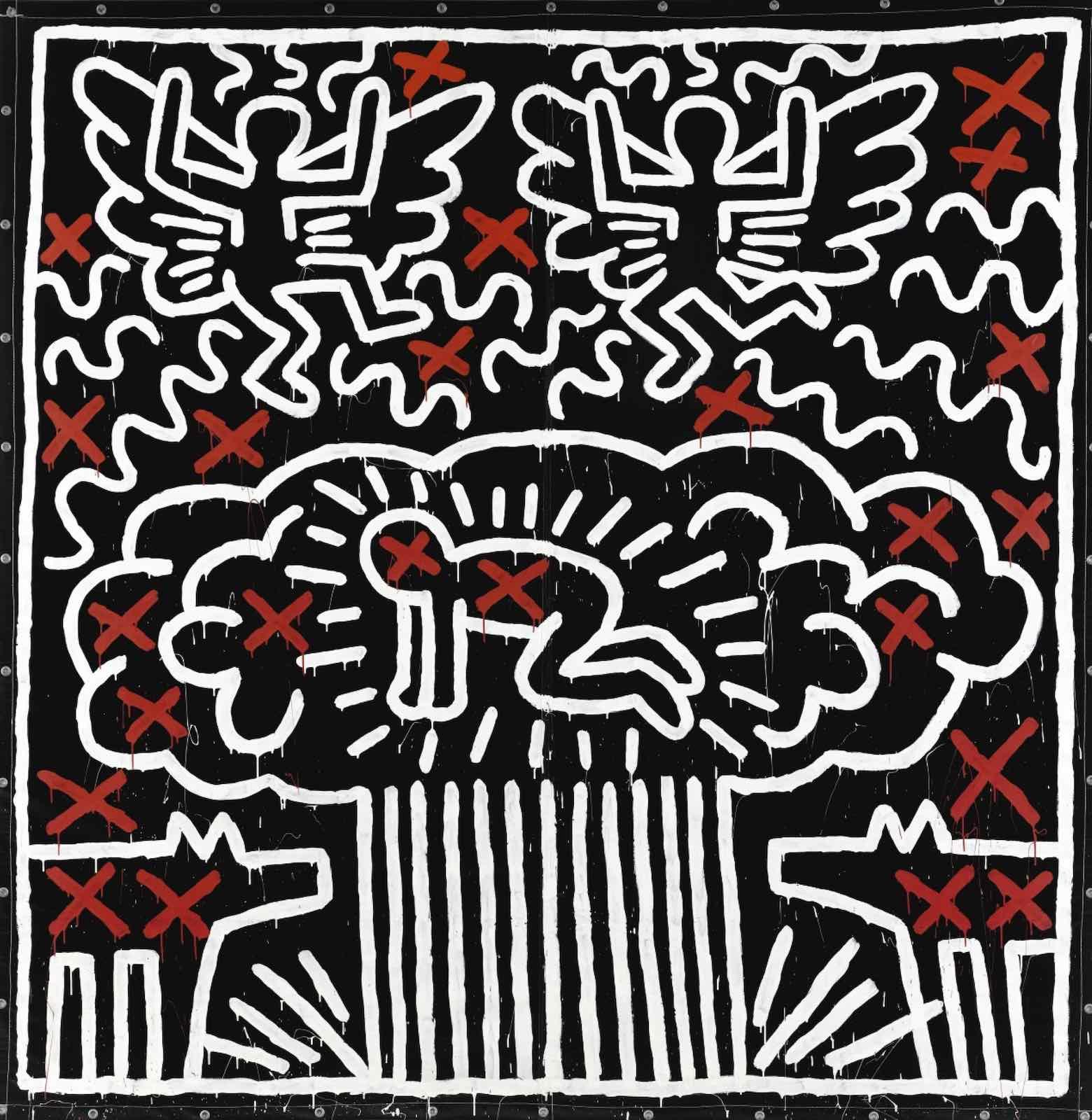
Keith Haring, detail of Untitled, 1982. Acrylic on vinyl tarpaulin with metal grommets. 121 1/2 by 118 3/4 in. 308.6 by 301.6 cm.
Pop Art emerged in the United States and the United Kingdom in the 1950s. The work of pop artists often elevates seemingly mundane or mass-produced items and imagery as a critique of the fine art world and its elitist tendencies.
Perhaps the most well-known pop artist of all time is Andy Warhol. Deeply entwined in the world of celebrity—in part because of his gossip magazine Interview, it is no wonder that Warhol’s name has maintained such popularity. Still, there are numerous other pop artists worth knowing a bit more about—some well known and remembered, others less lauded by history.
Eduardo Paolozzi, Mosaics at Tottenham Court Road Station, 1986.
Scottish sculpture and artist Sir Eduardo Paolozzi is considered one of the earliest pop artists. A founding member of the Independent Group, who met regularly at London’s Institute of Contemporary Art, Paolozzi was influentially anti-Modernist. He was also deeply fascinated by Surrealism and though he always referred to his art as Surrealist, his pioneering use of found objects, punchy colors, and advertisement formats has led many to posthumously categorize him as a pop artist.
An image featured in the film Infinity: The Life and Art of Yayoi Kusama.
Yayoi Kusama is an iconic figure within the art world at large. In her nineties, her work continues to bring crowds to museums. Born in Japan, Kusama attended the Kyoto School of Arts and Crafts where she learned traditional painting techniques. In the 1950s, she moved to New York City and was immediately attracted to the avante-garde scene and the work of pop artists in particular. Though she initially drew attention in the 60s for art happenings that featured nude participants painted with polka dots, she now primarily creates installation pieces.
David Hockney, Celia, Carennac, 1971.
David Hockney was a key member of the British Pop Art movement. His drawn and painted portraits are particularly well-known though he made and continues to make art on a variety of subjects. Though he was offered a knighthood in 1990, he declined. In November of 2018, Hockney’s Portrait of an Artist (Pool with Two Figures) became the most expensive work sold by a living artist when it went for $90 million at Christie’s. Several months later, Jeff Koons stole the title with a $91 million sale. Still making art, Hockney’s website boasts a digital gallery of paintings made on his iPhone and iPad.
Pauline Boty, Colour Her Gone, 1962.
British painter Pauline Boty was a founding member of the Pop Art movement and was the only widely successful female artist on the British side of it. Young, beautiful, and an actress, Boty faced countless barriers to success and recognition as a serious artist. Still, her work was unashamedly sexual and feminine and made a huge impact on the British and global Pop Art scene.
Keith Haring in his studio.
Keith Haring's artwork evolved directly out of the NYC graffiti scene of the 1980s. His cartoony, lively illustrations were often subliminally sexual. They eventually became activist-oriented, often advocating for AIDS awareness and safe sex practices. Today, Keith Haring’s work remains a cornerstone of pop culture. His personal iconography is recognizable to many who don’t even know his name.
Hariton Pushwagner, Fake News, 2017
Born under the name Terje Brofos in 1940, Hariton Pushwager did not achieve international recognition until 2008, when some of his drawings were shown at the Berlin Biennale of Contemporary Art. He reportedly struggled for a long time to find his personal style and even quit drawing for a period following his 1959 graduation from the School of Art and Design of Oslo.
Anna Claire Mauney
Anna Claire Mauney is the former managing editor for Art & Object. A writer and artist living in North Carolina, she is interested in illustration, the 18th-century, and viceregal South America. She is also the co-host of An Obsessive Nature, a podcast about writing and pop culture.![]()























